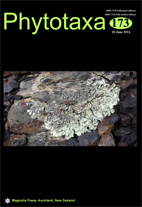Issue:
Vol. 173 No. 1: 20 June 2014
Type: Correspondence
Published: 2014-06-20
Page range: 91–94
Abstract views: 15
PDF downloaded: 15
Notes on Early Land Plants Today. 58. Historical circumscription of Schistochilaceae (Marchantiophyta) and a new combination in Schistochila
Botanical Museum, Finnish Museum of Natural History, University of Helsinki, P.O. Box 7, FI-00014 Helsinki, Finland
Allan Herbarium, Landcare Research, PO Box 69-040, Lincoln 9640, New Zealand
Department of Biology, Norwegian University of Science and Technology, N-7491 Trondheim, Norway
Department of Science and Education, The Field Museum, 1400 South Lake Shore Drive, Chicago, IL 60605–2496, USA
Department of Science and Education, The Field Museum, 1400 South Lake Shore Drive, Chicago, IL 60605–2496, USA
Marchantiophyta

